Standing apart from a glut of iOS accessory makers at CES this year was Exelium, with its Up-mobile inductive charging system for iPhone 6 and 6 Plus, and Ultra, a startup that showed off a new iOS-connected UV monitor.
Up-mobile iPhone 6 and 6 Plus inductive charging system
French company Exelium brought its Up-moble magnetic inductive smartphone charging products to the showroom floor, including two new solutions for Apple's latest iPhone 6 and iPhone 6 Plus handsets.
Inductive, or wireless, charging methods have been around for years, but Apple's reluctance to manufacture iPhones with replaceable batteries makes it impossible to use "patch" style converters that squeeze in between power contacts. Many accessory makers have instead opted for protective cases with hidden power converters that connect directly to an iPhone's Lightning port.
Exelium's Up-mobile product is in the same vein as competing case style chargers, but the company managed to fit its tech into one the thinnest solutions we've seen. Other products have a substantial "chin" to accommodate the internal Lightning plug, but Up-mobile adds on only a few millimeters, much closer to an iPhone sleeve than case.
Through the use of magnets, Up-mobile is able to dock with its accompanying power station without inserting wires or fumbling with adaptors. The form factor also allows for flexible setup options like wall mounting, docking in portrait and landscape modes and more.
One thing we don't like about current inductive charging solutions for iPhone is that most products block Lightning port access. Elexium told AppleInsider that a Lightning pass-through option is in the works and should be available in February or March.
The Up-mobile inductive iPhone 6 and 6 Plus charger is out now for $49 and another $39 to $49 for the base, depending on mounting options.
Violet UV monitor
After a successful funding round on Kickstarter, startup Ultra is bringing out its cleverly named Violet UV monitoring accessory for iOS.
The system consists of a wearable, waterproof UV sensor with built-in Bluetooth connectivity for streaming realtime exposure information to iOS devices. Worn on a wrist, belt, or clipped to a bag, Violet takes sunlight readings to measure the beneficial and detrimental effects of extended UV exposure.
Data is offloaded to the accompanying app, which processes the information and alerts users when it determines they've had too much sun. At the same time, the app estimates how long a user has to stay outside to reach optimal vitamin D production.
The app is customizable and can compensate for skin type, sunscreen applications, SPF, clothing and more, allowing for more accurate notifications. Further, Violet's software is capable of tracking multiple users at a time, each with their own personalized profiles, useful for outdoor family gatherings and beach days.
Violet is normally priced at $129, but customers who preorder before the scheduled April launch only pay $99.
 Victor Marks
Victor Marks
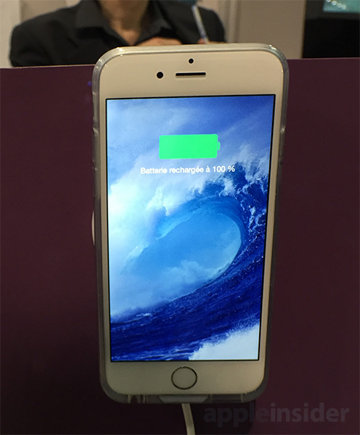
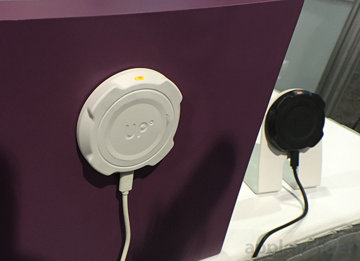
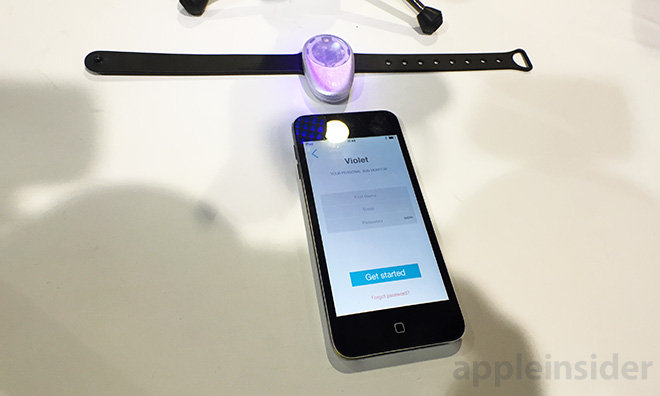
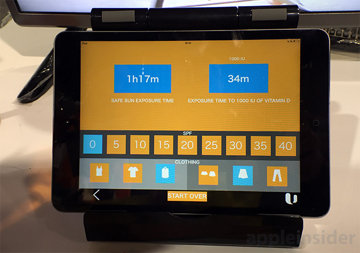
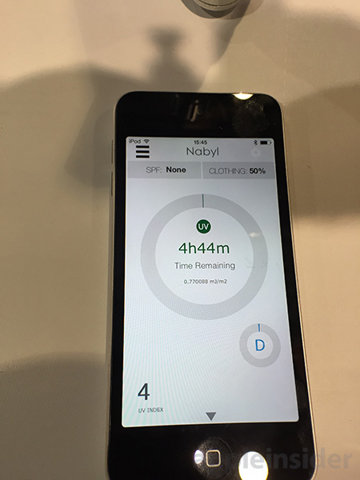







-m.jpg)





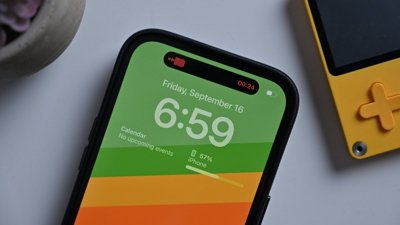
 Marko Zivkovic
Marko Zivkovic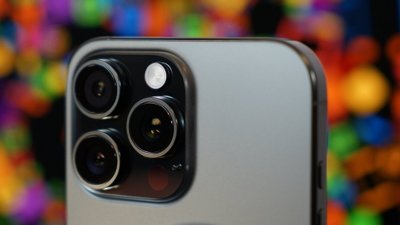
 Wesley Hilliard
Wesley Hilliard
 Christine McKee
Christine McKee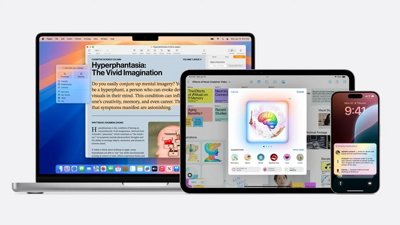
 Malcolm Owen
Malcolm Owen
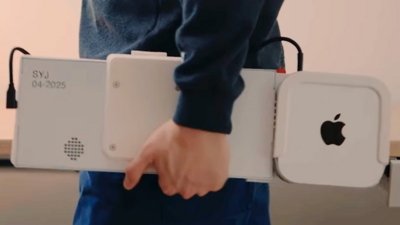
 William Gallagher
William Gallagher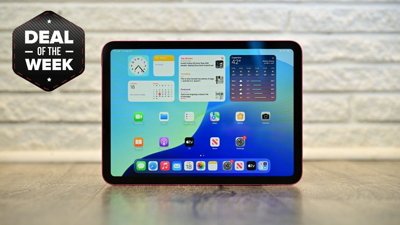
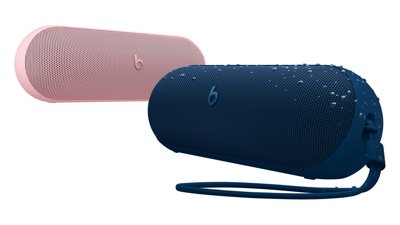
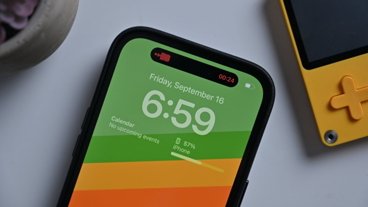
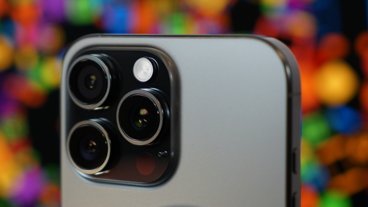
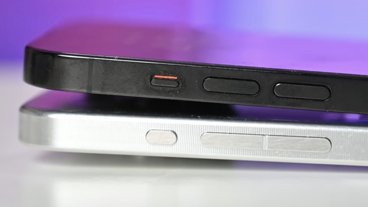


-m.jpg)



9 Comments
Inductive charging that isn't built into the phone is silly for most people. I can't think of anyone it would really be necessary for, maybe there is someone, but having to use a specific case to save 1 second on plugging in the lightining cable is a problem that didn't need a solution.
Nope. Keep trying, "wireless" charging.
The only one that comes close is the demo tech at CES this year that can beam the power from a mat-type device to a nearby iOS device. Its technology that if licensed out, could be built into many or all home appliances in the future. This way all of your power connected appliances could serve as wireless power broadcasters for your iOS device, constantly keeping them charged, wirelessly, while in the home.
Personally I think this and a combination of solar could make an iOS device conceivably last forever without being plugged in.
Whatever the case, it won't be until tech like described above is readily available that Apple goes anywhere near the current gimmick that is "wireless" charging.
"Hey look! MY phone has wireless charging! I just take this WIRE, and plug it in, and connect to this huge hideous ugly mat, find a place to put it, and then when I want to charge....I just have to come to this mat and put my phone down! Genius! Revolutionary! Apple is so behind!"
I am so glad Apple has the shred of intelligence it takes to see through current systems for the useless gimmick they are, and leave it to rabid android trolls to criticize Apple for being "behind" on wireless charging.
Some ecological considerations: An individual phone may (or may not) not strike you as a huge electricity consumer, but it does use more than a typical modern refrigerator, and computing in total is one of the largest uses of electricity on the planet (around 10%).
http://science.time.com/2013/08/14/power-drain-the-digital-cloud-is-using-more-energy-than-you-think/ which notes this is "the same amount of electricity that was used to light the entire planet in 1985. We already use 50% more energy to move bytes than we do to move planes in global aviation."
So multiply that by billions of phones (and tablets, watches, health devices, etc., etc.) and couple it with the fact that inductive charging can take roughly 20-50% as much current to deliver a charge, depending on the design and devices involved, and you have the makings of a highly undesirable, virtually unnecessary trade-off of first world convenience (IMO) in terms of sound energy management (for individuals, organizations and the earth)....
Efficiencies comparable to direct wired are coming or in a few cases maybe already here, but I'd like to see tech publications use the efficiency of any inductive "solution" as a metric in reviewing and comparing wireless charging devices to help customers gauge what the convenience is worth.
Hint: And if the manufacturer is not readily forthcoming with the info, a simple test for aftermarket solutions is to measure the total current draw to fully charge the same depleted device with its stock wall plug vs. via the inductive charger.
PS: Kudos to Apple for increasingly implementing green solutions in its own data centers, server farms in its own total "footprint."
As someone who lives in a country where UV exposure is a major health risk, and with a skin type that increases that risk somewhat, I'm interested in the Violet UV sensor. I expect it will get integrated into wearables, like the other health and environment sensors (Apple Watch 2, perhaps?), although having it as a separate sensor that can be attached somewhere other than the wrist is appealing. Wireless charging? Who cares? In a couple of years it will be standard, until then it's just a gimmick. Even if it does become standard, it's still not really solving a problem, it's just adding a feature for the heck of it.
[quote name="bigpics" url="/t/184214/hands-on-up-mobile-inductive-charging-system-for-iphone-6-6-plus-violet-uv-monitor-for-ios#post_2659028"]Some ecological considerations: An individual phone may (or may not) not strike you as a huge electricity consumer, but it [B][I]does[/I][/B] use more than a typical modern refrigerator. [/quote] No it doesn't. The link you posted is full of crap, and they've had to push updates to try to justify it. Making some assumptions for ease of calculation: An iPhone is on charge 24/7. it uses about 10w of power while charging, which is a relatively small percentage of the time. Perhaps 4 hours a day at most. It drops to around 3.5w of power when it's actually running full tilt, which is hardly ever. usually it's more like 0.5 watts, but still. Assuming the charger has a 50% efficiency, which again is a large exaggeration, since it's nearer 85% really, means 4 hours per day charging at 20w, 20 hours per day at 7 watts when running. So. (0.02kw *4) + (0.007kw * 20) * 360 = 50kwh per year, which at around £0.14 per unit is 0.14*50=£7. We use around 1000kwh per year, so that's just 0.05% of our electricity usage on excessively worst case scenario. Compare that with an air-con unit that uses 2kw for 6 hours a day for 2 months, that's 700kwh alone. Time actually says "The electricity used annually to charge the iPhone is 3.5 kWh". That's not a lot. A typical fridge uses 175kwh per year. The Time link is misleading too in that it adds other things to the mix too that're usually already in use by other people simultaneously and by other devices, like cell towers and routers, and internet infrastructure. However. I completely agree that right now, wireless charging is a total waste of time and energy. You need 10x the energy to charge something inductively than you do directly, since the coils in the pad and device are so loosely coupled. Some form of microwave energy would be more efficient, however it'd also cook anything nearby, so not too safe. What's wrong with taking a second to plug the damn phone in?!